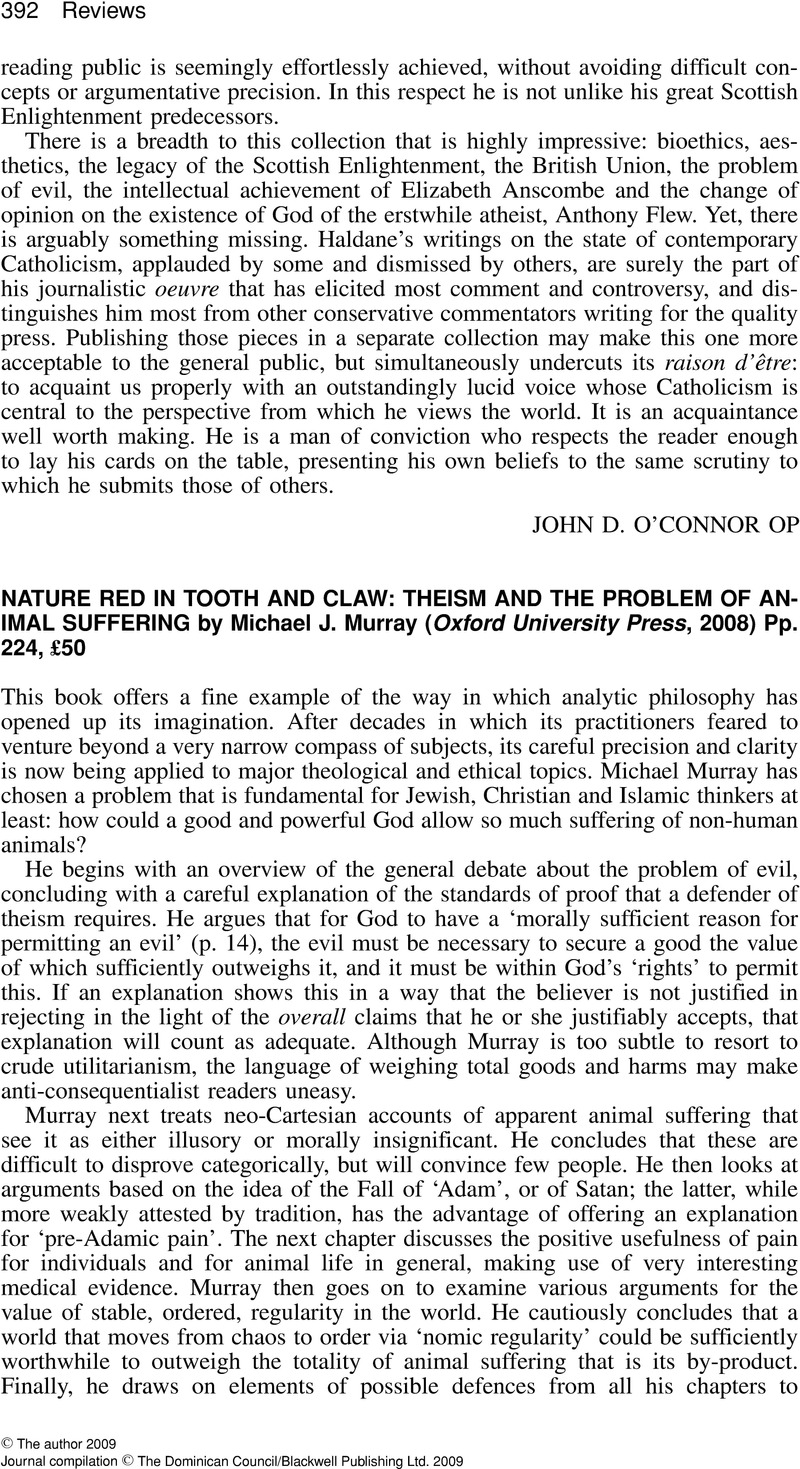No CrossRef data available.
Article contents
Nature Red in Tooth and Claw: Theism and the Problem of Animal Suffering by Michael J. Murray (Oxford University Press, 2008) Pp. 224, £50
Review products
Nature Red in Tooth and Claw: Theism and the Problem of Animal Suffering by Michael J. Murray (Oxford University Press, 2008) Pp. 224, £50
Published online by Cambridge University Press: 01 January 2024
Abstract
An abstract is not available for this content so a preview has been provided. Please use the Get access link above for information on how to access this content.

- Type
- Reviews
- Information
- Copyright
- © The author 2009. Journal compilation © The Dominican Council/Blackwell Publishing Ltd. 2009


